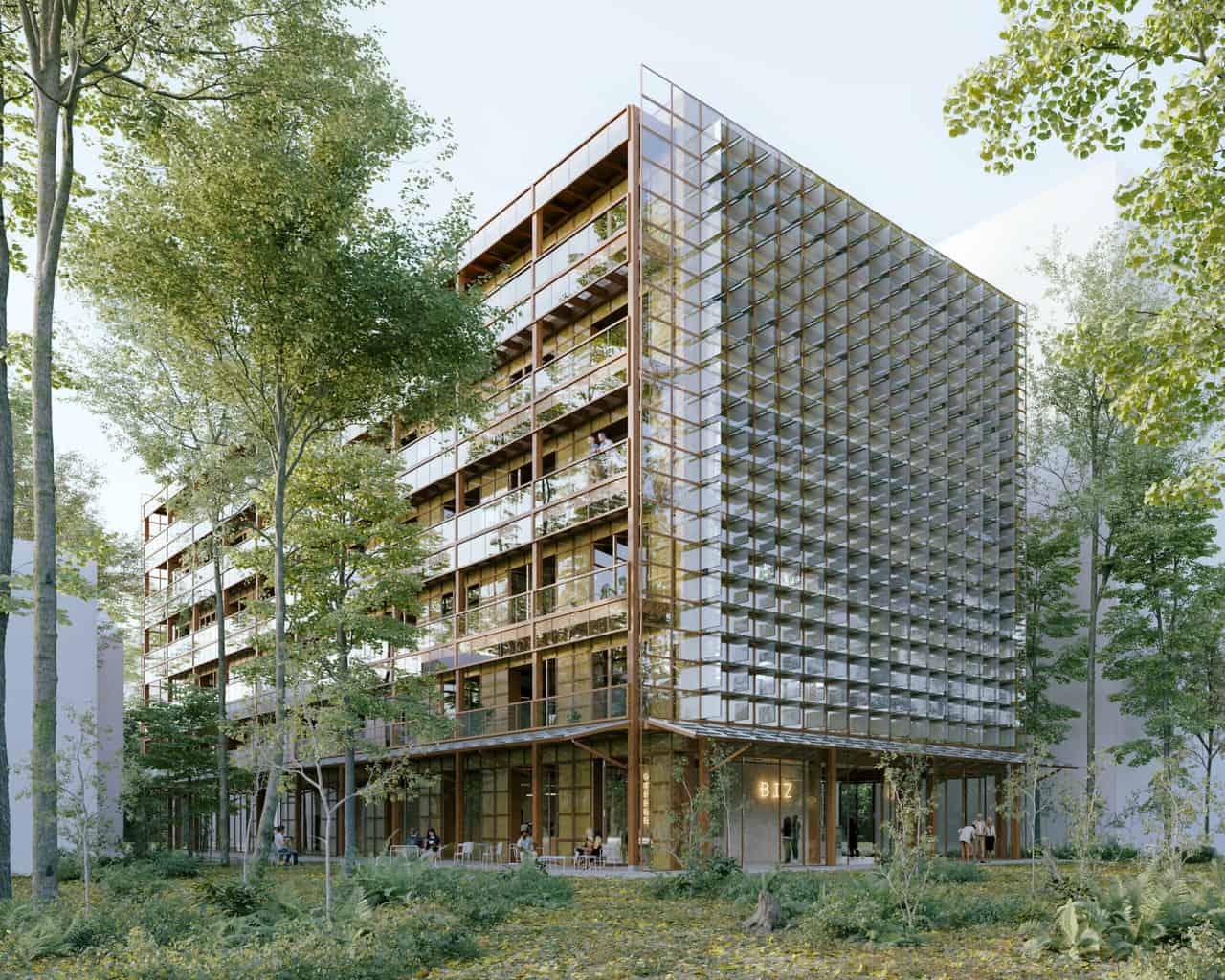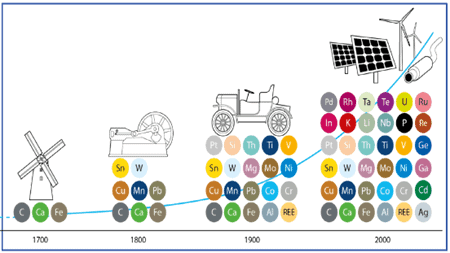
Alternative solutions to resource scarcity: what are the options?
4 minutes of reading
The energy transition to achieve carbon neutrality by 2050 is underway, with its panoply of tools: batteries for electric vehicles, nuclear energy, LED lighting, wind turbines, solar panels, to list but a few. But there’s a catch. Since these green technologies and energies require many minerals, they deplete global resources and pollute the environment.

The low-carbon world, a “high-materials” world…
According to the International Energy Agency (IEA), if we are to generate enough green energy to fulfill the commitments of the Paris Agreement made in 2015, humanity will need to quadruple its global metal production by 2040. In the area of mobility, the demand for minerals for electric vehicles and battery storage is set to rise by a factor of thirty by 2040 (source:IEA, 2021).
… with significant consequences for health and the environment
These metals are necessary to our societies’ ecological transition, but they come at a cost: the processes of extraction and refinery have significant environmental and health consequences. For example, Guillaume Pitron, a specialist in geopolitics and raw materials, reports that the purification of each tonne of rare earths (essential metals for advanced industries) requires the use of at least 200 cubic metres of water, which then becomes contaminated with acids and heavy metals before potentially being discharged into the environment. Therefore, technologies dubbed “clean” because their use does not emit CO2 actually require numerous metals during the manufacturing stage. The extraction and recycling of these metals is executed through a process of pollution relocation. The impacts are also felt in human terms. To extract these minerals, tens of thousands of children are put to work in some countries, often outside the European Union, and, as Claire Lapique, scientific journalist at the CNRS journal, points out, this industry is at the root of several armed conflicts.Major geopolitical challenges for access to crucial metals
Various analysts have sounded the alarm, warning of a potential escalation of geopolitical tensions. The reserves of the most crucial metals are concentrated in only a few countries. Many experts, including the International Energy Agency, have voiced concern that the struggle to access these essential materials may lead to future conflicts across the world. At present, China supplies 98% of the EU’s rare earth supply, Turkey supplies 98% of the EU’s borate supply, and South Africa meets 71% of the EU’s platinum needs. This raises questions regarding ecological sovereignty and energy autonomy at a time when “mining nationalism” is emerging in many countries.Citation : “To meet the global demands by 2050, we will need to extract more metals from the Earth’s crust than humanity has extracted since it originated.” (Guillaume Pitron, The Rare Metals War – The Dark Side of Clean Energy and Digital Technologies. Scribe Publications. (Originally in French: La guerre des métaux rares – La face cachée de la transition énergétique et numérique. Published by Les Liens qui libèrent).
Low-tech, right-tech, just-tech… Alternative approaches for future cities
In view of the fact that the current economic and industrial model is unsustainable, and in light of the environmental, social, and health challenges confronting us, together with resource scarcity and its cargo of geopolitical risks, the concepts of low-tech, right-tech, and just-tech have been gaining momentum over the past decade. While the term “low-tech” and its offshoots appeared to oppose that of “high-tech,” they do not, in fact, denote the rejection of all technologies. Instead, they present alternative approaches to technology that challenge the view of race to technological innovation as an end in itself. They invite us to consider other ways of producing and consuming, aligning our actions with planetary limits. For the construction sector, this primarily means avoiding new constructions or demolitions, instead prioritising the rehabilitation and transformation of existing buildings. When this is not feasible, construction methods that have the least possible impact on the environment can be adopted. Specifically? This involves prioritising the use of locally sourced bio-based and geo-based materials, with construction techniques that require minimal machinery and resources, and generate minimal waste. The low-tech approach also encourages greater involvement of users and residents, while boosting their ability to act and strengthening their independence. That means fostering a better understanding of how our living spaces function and the adoption of new behaviours (such as turning off lights at night in commercial buildings, closing shutters, etc.), for instance. Other viable routes include encouraging a frugal approach to equipment, or setting up initiatives that promote social cohesion, such as the sharing of services and equipment. The growth of low-tech also has great potential at the scale of cities and regions. Whether applied to greeing, mobility, public spaces, energy, waste management, water sanitation, or even tourism, this kind of approach can yield many solutions that help make territories more sustainable and resilient.Moving from isolated actions to a societal model!
Many of those involved in the sector of urban development are beginning to adopt a low-tech approach in their projects. A world away from the “smart city” and “green tech” models that depend on increasingly inaccessible energy and metals, the low-tech approach offers an innovative framework for designing, building, and developing cities and territories that are more sustainable, inclusive, and resilient. However, there are still numerous semantic, psychological, regulatory, economic, and cultural barriers. At present, there is a general tendency to view smart cities and technological advance as the best, or only, solutions to address the major challenges of the century. It is therefore crucial that we promote the sustainability of alternative approaches by stimulating new points of view (experiencing new perspectives, changing our ideas, evolving new ways of relating to the world, etc.), and by providing concrete solutions (giving substance to these perspectives through examples of virtuous projects, with companies adopting these new models).“High-tech cities are not a proven solution, nor are they inevitable. Other trajectories are possible and desirable, such as low-tech cities (or metropolises), in which, without completely rejecting technology and technical innovation, cities demonstrate greater “techno-discernment” both for the environment and for our individual and collective autonomy and resilience. Philippe BIHOUIX, Engineer and CEO of the AREP Group, Thematic leader of ESS (Social and Solidarity Economy) Lab.
For more information:
To find out more, read our Trends Report #13 “Low-tech, Just-tech, Right-tech… de nouvelles approches pour les villes et territoires.” (Low-tech, Just-tech, Right-tech… new approaches for cities and territories).More reading
Read also




What lies ahead? 7 megatrends and their influence on construction, real estate and urban development
Article
20 minutes of reading

